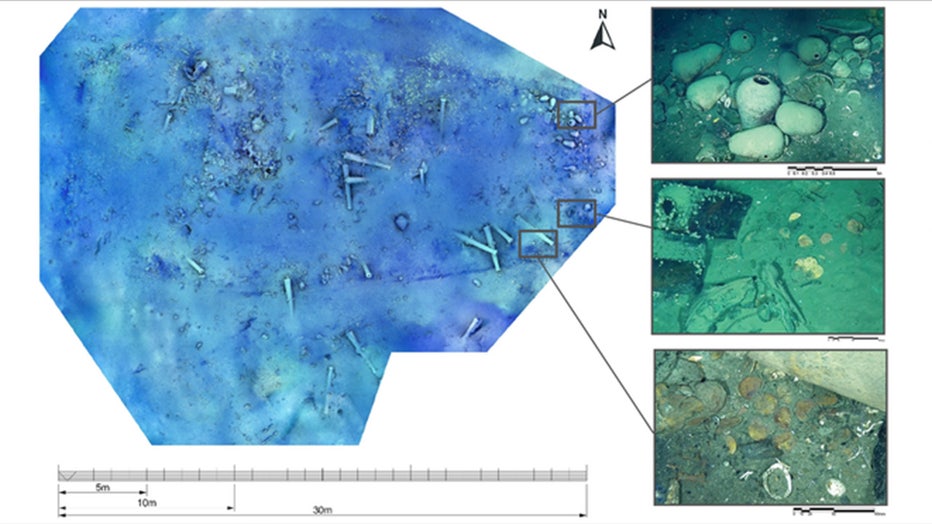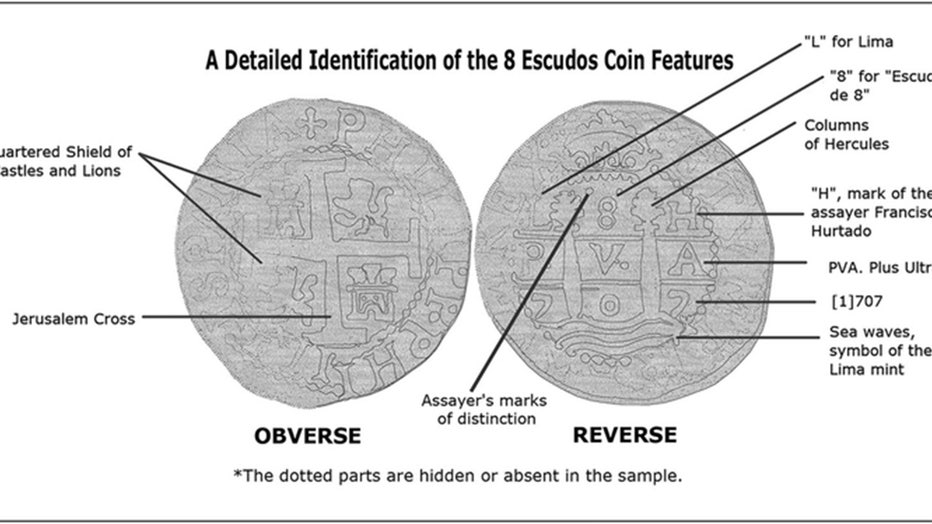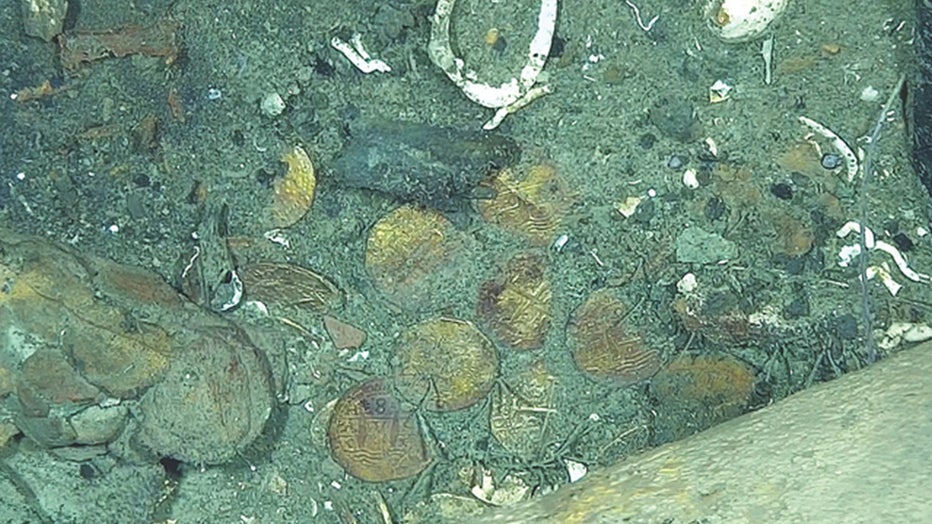Photos show possible treasure from 300-year-old 'holy grail' of shipwrecks off Colombia

FILE - Artifacts found at the shipwreck in San Jose Galleon. (Presidencia de la República – Colombia)
An underwater mission to investigate a 300-year-old shipwreck off the coast of Colombia has revealed new photos of gold coins.
The San José Galleon was sunk in 1708 by a British warship, bringing down the ship full of treasure, including gold coins.
For years, the Colombian government has wanted to locate and recover the treasure from the San José, but the exact location of the ship has never been publicly revealed.
HOW A 128-YEAR-OLD GREAT LAKES SHIPWRECK WAS FOUND THANKS TO AN INVASIVE ANIMAL
Four unmanned vehicles have been deployed to investigate the shipwreck since 2015.
In 2022, photos revealed the spatial distribution of the remains of the ship.
A recent study published in Antiquity showed researchers analyzed high-resolution pictures of gold coins found around the shipwreck to try and determine if the wreck truly is the San Jose Galleon.

Three areas of cob hoards were identified on both the port (b & c) and starboard (a) sides of the stern section. They are scattered in groups surrounded by artefacts from the cargo, artillery and everyday life aboard the ship (ARC-DIMAR, 2022
While it was difficult to determine the exact number of coins on the seafloor, researchers found the coins were estimated to have an average diameter of 32.5 mm and (1.3 inches) and probably weigh about 27 grams (about 1 ounce).
Close analysis of the faces of the coins showed details of the Jerusalem Cross with the Quartered Shield of Castles and Lions, a symbol of Castile and Leon, within a dotted border, the study said.
HISTORIC TREASURE TROVE OF GOLD, JEWELRY FOUND IN CZECH FOREST

An 8-escudos cob of 1707, based on high-resolution in situ photographs from the 2022 archaeological campaign ( Antiquity Publications Ltd / FOX Weather)
Details of the Crowned Pillars of Hercules above the waves of the sea could be seen on the coins' opposite side.
According to the study, between the pillars of Hercules was an "L" indicating the coins were minted in Lima, Peru.
An "8" on the coins proved they were the highest value of coins created at the time; an "H" referenced the mark of Francisco de Hurtado, the Chief Assayer in 1707.
SHIPWRECK FOUND IN LAKE SUPERIOR SANK IN 1940 DURING STORM, TAKING CAPTAIN DOWN WITH IT

High-resolution in situ photograph of cob hoard area in the port section of the stern, showing the obverse and reverse faces of coin, as they were observed on the seabed. ( ARC-DIMAR, 2022/Antiquity Publications Ltd / FOX Weather)
The year of minting was noted by a "707", meaning the coins were minted in 1707.
These details indicate the shipwreck happened in 1708 and helps point to the route the ship took prior to its sinking.
The study said the evidence supports the identification of the wreck as the San José Galleon.

